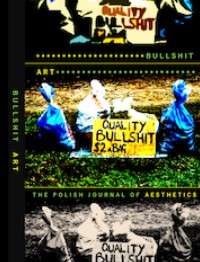“Bullshit Art” and Non-Fungible-Tokens
“Bullshit Art” and Non-Fungible-Tokens
Author(s): Thorsten Botz-BornsteinSubject(s): Visual Arts, Aesthetics, Financial Markets, ICT Information and Communications Technologies
Published by: Wydawnictwo Uniwersytetu Jagiellońskiego
Keywords: Non-fungible Tokens; Beeple; Injective Protocol; Authenticity; Kitsch; Bullshit;
Summary/Abstract: The NFT art world is a mixture of late capitalism and populist aesthetics in which any idea of an “adequate artistic expression” has become increasingly difficult. Beeple’s digital artwork “Everydays: The First 5,000 Days” sold for $69.3. Twobadour, one of the two buyers of the work, thinks that work “is going to be a billion-dollar piece someday.” Until recently, “art” as a vague institution could still provide some landmarks about the ‘how’ of art and the discourse attached to it. Galleries and museums played a role in promotion, which sparked debates, both public and elitist. Curators, who are generally excluded from the financial craze, functioned as gatekeepers. Once NFTs are introduced into a highly speculative art market, any notion of aesthetic “truth” becomes dysfunctional. Authenticity emerges from the Enlightenment tradition for which being authentic meant to be free and autonomous. In the twenty-first century, authenticity needed to be installed in nonmateriality, and NFTs are the latest result of this process. Dematerialization means despatialization. The digitized version of a work is authentic, but authentic has here a meaning different from what it was before. The shift goes hand in hand with the reissuing of authenticity as a highly abstract category that is common in the twenty-first century.
Journal: Estetyka i Krytyka
- Issue Year: 63/2021
- Issue No: 4
- Page Range: 69-83
- Page Count: 16
- Language: English

